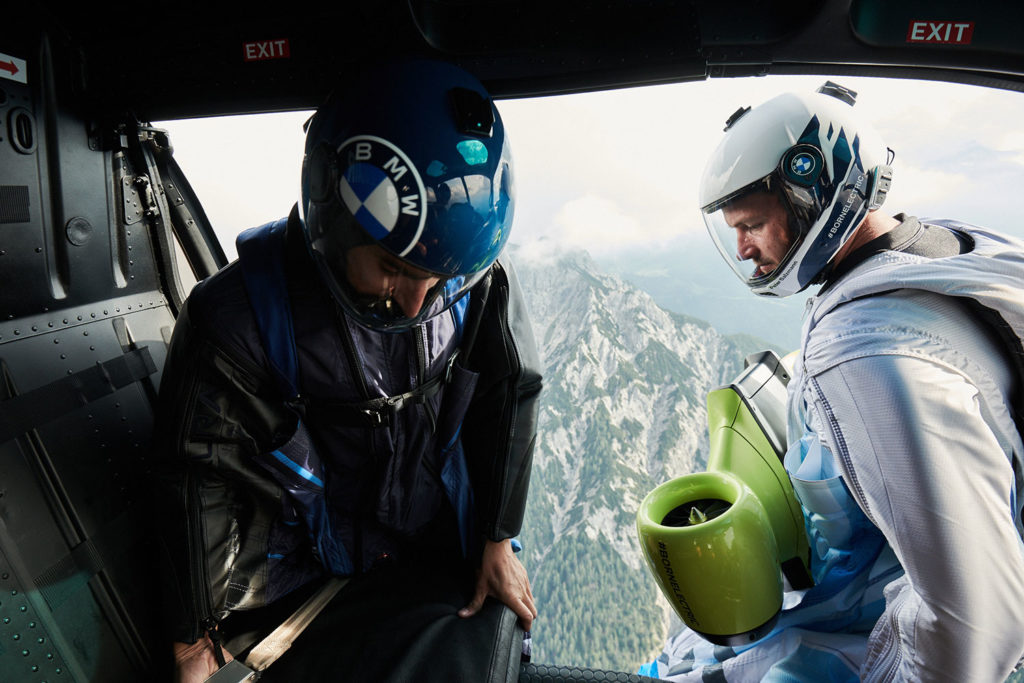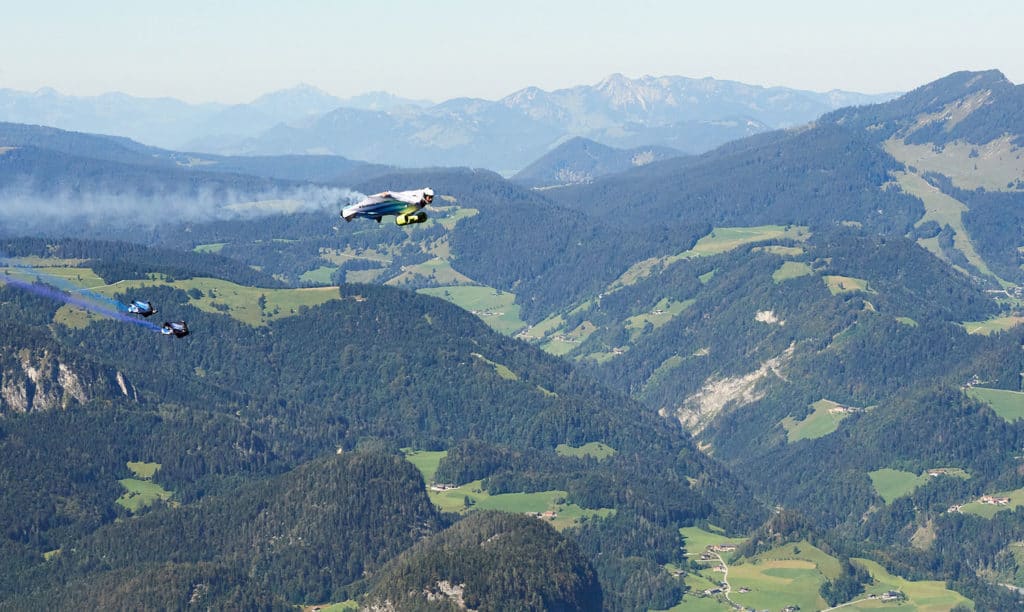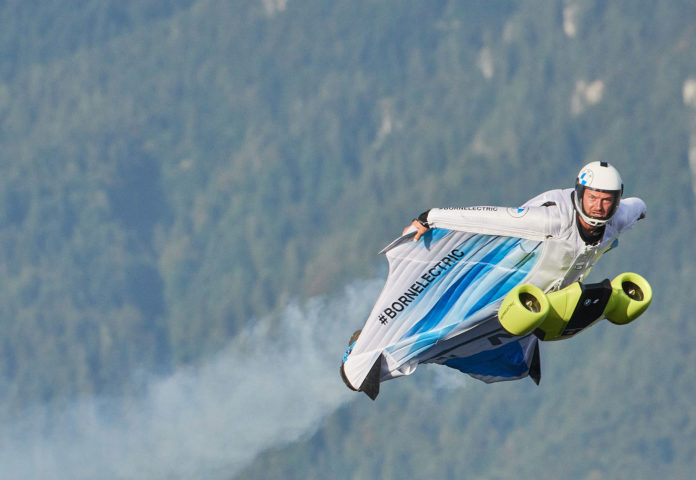The BMW i Division, with the help of Designworks and an Austrian wingsuit pilot Peter Salzmann, has made people’s centuries-old dream come true in three years. Within the framework of the #NEXTGen 2020, the BMW Group will present the first electric drive system for a wingsuit.
The Electrified Wingsuit by BMW i program was started thanks to Peter Salzmann’s ambition to take wingsuit to another level. “At the time, I was developing suits for skydiving and base jumping with a friend and base jumping mentor,” Peter Salzmann explains. “In a relaxed atmosphere one evening after a day of testing, we threw out lots of ideas about how we could improve performance. One of them was a supporting motor – and it’s an idea I just couldn’t shake. I found the idea of being able to jump from my local mountain wearing the wingsuit and land in my garden fascinating.“

“I quickly came up with the idea of an impeller; in other words, a propeller enclosed by a ring or tube-shaped housing. However, a fuel-powered or conventional motor was out of the question,” Salzmann points out. “Sustainability is very important to me, and something I try to live my everyday life by. I enjoy nature from the air and on the ground – that’s why I aim to consistently follow the path of sustainability, even when it comes to mobility. With the fully-electric BMW iX3, I can now do that when preparing for my latest jumps – and thanks in no small part to the support of BMW i, the progress in electrification has made my dream possible.“

The innovative drive module and the likewise entirely newly designed wingsuit were developed in cooperation between BMW i, Designworks, and Salzmann. The Electrified Wingsuit has a fly unit with two encased carbon propellers, so-called impellers, each providing a power of 7.5 kW, a speed of around 25,000 rpm – generating a total power of 15 kW for approximately 5 minutes. In the free fall, while normal wingsuit operators can often reach horizontal speeds surpassing 100 km/h (62 mph), the electric wingsuit can apparently boost speeds up to 300 km/h (186 mph).
It took three years between the idea, development, tests in the wind tunnel of the BMW Group’s Aerodynamic Testing Center in Munich. For the maiden flight of the electric wingsuit, Salzmann was dropped by helicopter at 3,000 meters (9,800 feet) along with two other conventional wingsuit operators over the mountains in his native Austria.
Directly after the jump from an altitude of 3,000 meters, all three flew in the direction of a mountain massif. With the aid of the electric drive, Salzmann accelerated faster than his colleagues and was able to fly across the peak in steep flight. He was also able to meet up with the other two pilots who had flown in glide flight around the mountain, where they opened their parachutes and landed together.
